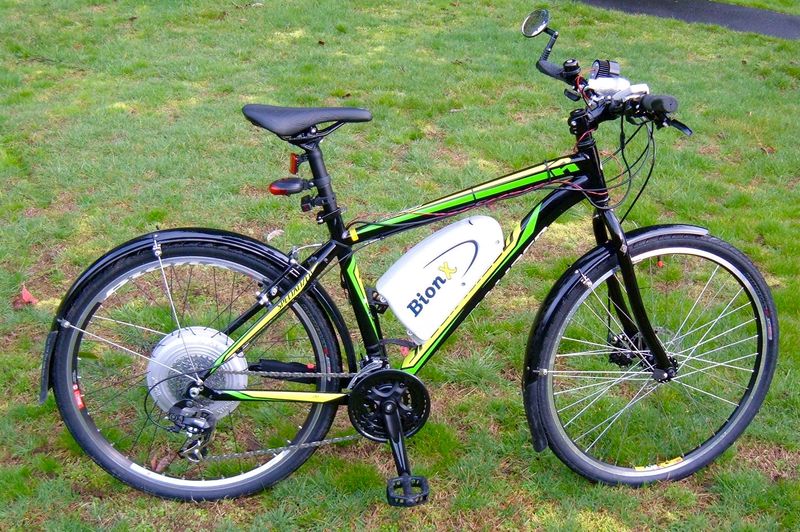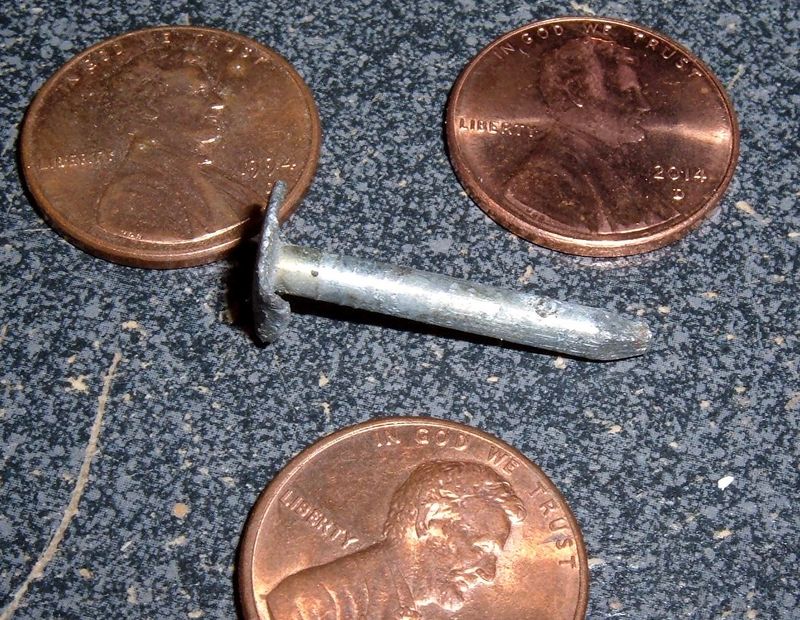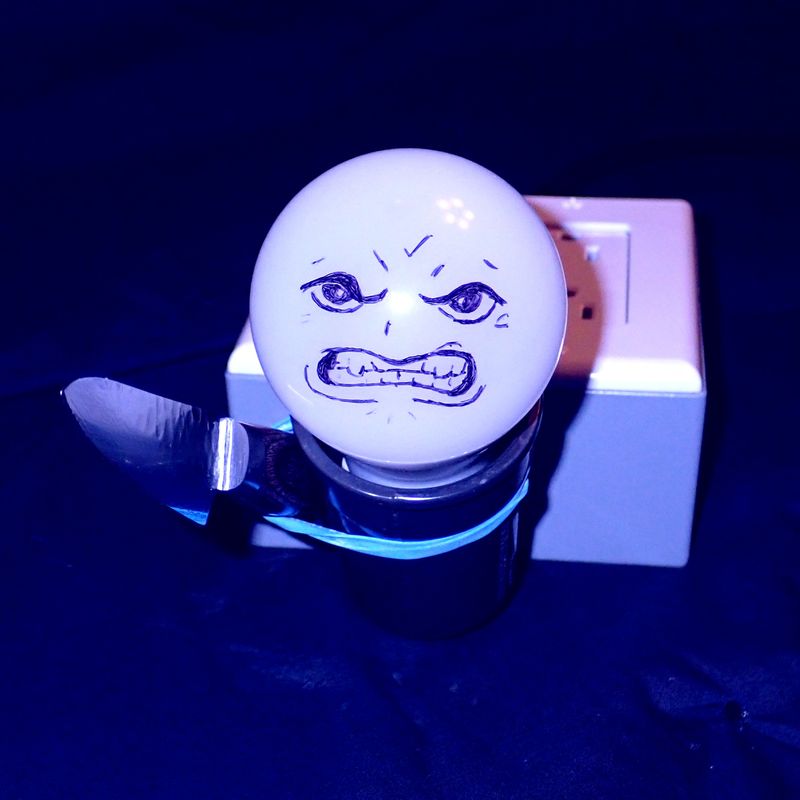Tesla very clearly builds some good cars. The Model S is an incredibly well regarded car, and it certainly goes like stink in a straight line.
A lot of Tesla fans claim that electric vehicles are inherently superior, because with fewer moving parts, they’ll be able to stay on the road basically forever - no piston rings to wear, no transmissions to fail, no oil to change.
But will they? Frequently, the decision to repair or scrap a car isn’t made based on what is technically possible, but based on what the owner thinks is financially reasonable. In many cases, it’s possible to repair a car long past what most people would consider reasonable, but cars end up scrapped anyway because someone doesn’t want to pay for the repairs.
For the Model S to remain on the road long past the standard lifetime of cars, then, it has to be financially feasible for an average owner to repair it and keep it running.
Is it? Read on and let’s take a look.
What makes a “Repairable Car”?
Any car (or other vehicle) kept around long enough is going to need repairs at some point. Things break. It’s the nature of the reality we live in, and it’s especially the nature of things that go pounding down poorly maintained roads at high speeds for hundreds of thousands of miles.
What matters for longevity, then, is how easy it is to repair something when it breaks, and how expensive it is to get the parts and knowledge required to perform the repair. If something cannot be affordably fixed, the whole vehicle gets scrapped.
I’ve owned a number of vehicles over the years. Some, I’ve literally rescued from junkyards. Others, I’ve intercepted hours away from the junkyard (“Hey, the scrapper offered me $125, beat that and it’s yours.” ”I’ll be up there in half an hour with cash.”) - and I’ve kept all of them on the road, and sold them in working condition to other people. In the process, I’ve learned a lot about what is easy to keep on the road, and what is hard.
There are several factors that go into a repairable car.
The first, obviously, is being able to get the parts. Having a common enough car helps a lot. Nobody is going to have problems finding parts for a Mustang or a Civic. You can get parts for them anywhere, and there are often a wide range of aftermarket parts available as well to improve on what the factory put in.
The second factor is the design of the car. How easy is it to replace parts? If you need a full factory service manual (that you cannot obtain) and a bunch of specialized tools to work on the car, it fails here. If you can repair the common failures with a set of socket wrenches and a Chilton’s or Haynes manual, awesome! Worth a special mention for “difficult” are the cars that needlessly require a service computer to replace parts. On a certain 1994 GM car I’ve had the displeasure of working on, replacing the brake master cylinder requires a $10,000 GM Tech 1 computer, because removing the master cylinder requires removing the antilock brake module. This, in turn, requires detensioning the antilock actuator. Which requires a computer. Not a friendly car to work on, and I’d hope it’s long since been turned into anvils.
How Repairable is a Tesla Model S?
Tesla has, at literally every corner, made it as hard as they can to work on their cars. An incomplete list of issues with keeping a Model S on the road includes:
- Service manual availability
- Extended Warranty Transfer & Exceptions
- Firmware Updates for Everything
- No independent shops
- Salvage title checks
- Strong stated opinions about information screens
- Lack of a working OBD-II port
Service Manuals
The first problem in trying to repair a Tesla involves the service manuals. Historically, factory service manuals are easy to come by, and the Chilton and Haynes aftermarket manuals cover most things you’d want to do on a car.
Tesla, being of the internet age, has “progressed” past paper manuals you can buy and peruse - they’ve got their service manuals available online! If you browse to https://service.teslamotors.com/, you see a friendly “WELCOME TO TESLA MOTORS SERVICE” banner, with information about available information subscriptions.
Yes, subscriptions. $30/hr, $100/day, $350/mo, or $3000/yr (prices as of Feb 15, 2016).
Well, that’s still better than shop labor rates, right? One click takes you to the Registration page, where you enter your email, a password (complete with password strength meter), and once you select your country (“United States” for me), there’s a bit of a problem.
I don’t live in Massachusetts.
And there’s no other options in the list.
So, sorry. You probably can’t get the service manuals outside Massachusetts. In a car with sensors everywhere, you probably shouldn’t pry anywhere with one. Where are they? Guess!
Why can you get the manuals in Massachusetts (if for obscene rates)? Because they passed the Massachusetts Right to Repair Initiative back in 2012.
Extended Warranty Transfer
Tesla has an 8 year/unlimited mileage battery and motor warranty on their Model S. However, the rest of the car has a reasonably standard 4 year/50,000 mile warranty.
If you’d like to extend this out to 8 years, you can - Tesla offers an extended warranty that can be purchased before the 4 year/50,000 mile warranty is expired.
For quite a while, this couldn’t be transferred to a new buyer. However, in the middle of February, 2016, Tesla did change this, and chose some really weird wording for the change.
The original, before mid-Feb: https://www.teslamotors.com/support/service-plans (Feb 14, 2016):
Can I transfer my Tesla Service Plan or Extended Service to the new owner if I sell my Tesla vehicle?
No, you can request a cancellation and reimbursement of your Tesla Service Plan. Please refer to the Terms and Conditions for your Tesla Service Plan or Extended Service for more information.
Shortly after some news sites noticed this change, Tesla said “Whoops!” and changed it to some shiny new wording:
Current wording, mid-March:
Can I transfer my Tesla Service Plan or Extended Service to the new owner if I sell my Tesla vehicle?
Yes, you can transfer the unused portion of your Tesla Service Plan or Extended Service Agreement with the sale of your Tesla. In addition, we’re going to take this opportunity to go one step further: Tesla owners can transfer the unused value of your Extended Service Agreement towards an Extended Service Agreement for a new Tesla Model S or Model X. Please refer to the Terms and Conditions for your Tesla Service Plan or Extended Service for more information. You can view these Terms and Conditions after logging into your Tesla account. Click on “Services Sign Up” and following the appropriate link for your chosen plan.
Tesla claims the previous wording was a mistake - but notice in the new wording, “In addition, we’re going to take this opportunity to go one step further:” What opportunity? That they got caught with some changes? It’s really weird wording for a standard policy, at best.
Extended Warranty Exceptions
Not wanting to trust that everything would be resolved within the first 4 years, you wisely bought the extended warranty.
What does, and doesn’t, this cover?
If you haven’t looked over it, you should. As of this posting, the document is dated Feb 18, 2016. I’ll highlight a few interesting bits and pieces.
Per-Visit Deductible
The deductible for an extended warranty visit is $200. Per visit (not per issue).
Schedule Service Requirements
You did keep up with all the “optional” scheduled service, right?
To maintain the validity of this Vehicle ESA, You must follow correct operations procedures and have Your Vehicle serviced as recommended by Tesla during the Agreement Period of this Vehicle ESA. If requested, proof of required service, including receipts showing date and mileage of the Vehicle at the time of service, must be presented before any repairs under this Vehicle ESA commence. Service within 1,000 miles and/or 30 days of Tesla’s recommended intervals shall be considered compliant with the terms of this Vehicle ESA.
This is especially entertaining, considering Tesla’s stance on warranty for the “regular warranty” (from https://www.teslamotors.com/support/service-plans#/tesla-service, March 2, 2016):
If I choose not to service my Tesla vehicle, will this void my warranty or Resale Value Guarantee?
It is highly recommended that you service your Tesla vehicle once a year or every 12,500 miles. If you do not follow this recommendation, your New Vehicle Limited Warranty will not be affected. If you are financing your Tesla vehicle through Tesla Financing, you will only be eligible for the full Resale Value Guarantee if your Tesla vehicle is brought in for service per the above recommended timeline.
They conveniently fail to mention that by doing this, you might void your extended warranty.
Transport to the Authorized Service Center
It’s on you. Hopefully you live near a Service Center.
The cost of transporting Your Vehicle is not included in this Vehicle ESA and You are solely responsible for the cost of transporting Your Vehicle to the Tesla Authorized Service Center.
Tesla’s new 500 mile roadside assistance offer doesn’t seem to apply to the extended warranty. Sorry.
Exclusions (What is not covered)
This section includes a lot of things that will void your warranty or aren’t covered. A sample of items:
- Repairs, modifications or alterations, or the installation or use of fluids, parts or accessories, performed by any service provider other than a Tesla Authorized Service Center without prior authorization from Tesla;
- …using the Vehicle as a stationary power source…
- …including not performing all vehicle maintenance and service requirements during the Agreement Period…
- Vehicles used for commercial purposes, which includes but is not limited to government purposes, pick-up, and delivery service, company pool use, or for service or repair calls, route work, or hauling;
- Racing on or off road, competition, speed contests or autocross or for any other purposes for which the Vehicle is not designed…
- Roadster and Model S vehicles used for towing;
- Towing the Vehicle or improper winch procedures;
- Tampering with the Vehicle and its systems, including installation of non-Tesla accessories or parts or their installation, or any damage directly or indirectly caused by, due to or resulting from the installation or use of non-Tesla parts or accessories;
- Adjustments necessary to correct squeaks, rattles, water leaks or wind noise;
- Parts and normal or expendable maintenance items and procedures such as annual service and diagnostics checks, brake pads/linings, brake rotor, suspension alignment, wheel balancing, hoses, air conditioning lines, hoses or connections, Battery testing, fluid changes, appearance care (such as cleaning and polishing), filters and wiper blades/inserts;
This is a small list of ways to void your extended warranty and things that aren’t covered. Basically, unless you’ve had a Tesla Service Center do all the work from day 1, on schedule, they can probably find an excuse to not cover you.
Regarding competition driving, autocross, etc - remember, this is a company who wrote their interpretation of a test drive, including such details as, “Instead of plugging in the car, he drove in circles for over half a mile in a tiny, 100-space parking lot.”
Have you driven for Uber? Ever? That might be considered a “commercial purpose.” Is it? Maybe.
I certainly hope you haven’t done what a Tesla owner in Texas did, and towed a ton and a half or so behind a Model S. That’s definitely going to void the extended warranty!
If it leaks water anywhere? That’s not covered either.
And air conditioning lines not being covered? They shouldn’t fail that early.
Basically, if Tesla doesn’t want to honor your extended warranty agreement, they can probably find some way out of it.
What about service center costs?
Service Center Costs
Since the only answer for service is, “Take it to your nearest Tesla Service Center,” it would be helpful to know what will it cost to repair a Model S out of warranty? Nobody knows! They’re all in warranty!
It’s possible to take a look at known service plan pricing, though, and get an idea.
https://www.teslamotors.com/support/service-plans lists the services performed and cost for each of the three annual inspection levels.
For a service consisting of: Multi point inspection and alignment check, tire rotation, cabin air filter replacement, wiper blade replacement, and a new set of key fob batteries, you pay $400.
If brake fluid replacement and “AC Service” is added to the previous, it’s $700.
And if the battery coolant is getting replaced, it’s $900.
This is not particularly cheap. At all. Especially when one considers that the car is perpetually performing a “Multi point inspection” of itsself. From a comment in a post on rebuilding a flooded Model S, the cars are constantly detecting and reporting faults back to the mothership, even as they flood (apparently with enough detail to determine that the battery pack was taking on water). This isn’t a 1970s Camero. We’ve moved to sealed bearings and bushings for suspension, and everything else has a sensor. What are they inspecting?
Don’t expect the Service Center to be cheap, out of warranty. It’s not like you’ve got other options!
Salvage Titles
A salvage title is a reasonably straightforward thing. It means the insurance company didn’t consider the vehicle economical to repair (usually if it’s more than 50% of the remaining value), and have fun.
You can usually pick up salvage title vehicles cheap, repair them yourself (since parts cost is less than “insurance company shop cost”), and be on your way.
Well, unless you tried to do that to a Tesla with a salvage title. Tesla, unlike every other manufacturer, will only reactivate your car in their system if you take it to them first.
Take a look at their Authorization & Release for Inspection of Salvage Vehicle form.
In a nutshell:
- Tesla requires you to bring the vehicle to one of their Service Centers or a Tesla-certified body shop to do a detailed inspection, to their desired level of detail (which, of course, you can’t find out in advance). You pay actual cost for this inspection.
- All warranties are void (this is reasonable enough).
- If Tesla doesn’t like the repairs, they won’t touch the vehicle until you fix it to their satisfaction. You, of course, pay for subsequent inspections. And the repairs.
- “If Tesla determines that sufficient repairs cannot be made to the Salvage Vehicle, Tesla will not service the Salvage Vehicle.”
- Tesla won’t sell you parts to fix your vehicle (not that you can get the service manual anyway).
Basically, a salvage Tesla is useful as a source for parts Tesla won’t sell people, and that’s it. Tesla has the final say on repairs, and if they don’t feel like doing it for you, well, tough.
Would you like to do something interesting with a salvage Tesla chassis, like putting a stretched Vanagon body on it? Sorry. This guy’s local service center sent him an email saying, “Due to the salvage status of your Model S , I have been instructed to cease providing you with parts.”
Did you buy a salvage Model S and repair it yourself? Oh… you wanted it reactivated so it would work? Tough. Not only does Tesla “deactivate” cars, you have to bring it to them and pay their inspection fees to get it working again.
Who really owns a Tesla? Not the title holder, that’s for sure.
Information Screens
Recently, a set of photos of the service menus of the Model S did the rounds of the internet.
Why is this remotely interesting on the 4th production year of a car? Well, because most people can’t get to it. Even read only screens. You’re locked out, on “your” car.
The car has a wealth of information available to it, and the only way to obtain this is with a Tesla Technician. Almost certainly, this will not be released to owners when the car is out of warranty (though if the car detected it’s status and unlocked access, this would be incredible).
A Tesla VP, posting on Tesla Motors Club back in 2012, expressed a very clear opinion on the service screens:
The screens behind this password are behind a password for a reason. These diagnostic screens contain information that is not meant to be public. These screens are accessible in the car to help our technicians help our customers. They contain information about the car and its systems.
I won’t go into all the reasons why I would prefer these screens not be posted here, or anywhere else for that matter, but if anyone reading this owns or works at a business that has information that is not meant for public display, then they will understand my request. If you work at a company with a client list, you would prefer that your client list not be published on the web. If you use any type of proprietary software or hardware, you would prefer not to have the code published on the web. If you have a new technology that you are fighting very hard to bring to market, you’d prefer that all the workings behind your new technology not be published on the web.
I could go on and on, but I will not. I will simply say that what is behind this password is not meant for public display. It is there to allow us to help our customers as quickly and efficiently as possible, and I would respectfully ask that the screens and content of the screens not be posted openly anywhere.
So, despite you holding the title, it’s Tesla’s information. Even useful things, like tire pressure.
OBD-II and Network Ports
This information being unavailable is in contrast to almost every other car on the market that puts out plenty of useful information over the OBD-II port. They’re required.
Tesla has one on the Model S. It just doesn’t happen to work. Even if you just want basic information like “speed” and “miles driven” for those pay-by-the-mile insurance discounts? Nope. Nothing. They just think it’s a parked car (before the companies involved figured out that it’s not compatible).
Fortunately, the Model S has an accessible ethernet port. Unfortunately, if you use it, you may get a phone call from Tesla that talks about voiding your warranty, industrial espionage, and then a firmware update that disables the port.
Tesla doesn’t want you messing with “their” car.
Why does this matter?
It matters because Tesla would like people to believe they’re making very long lived cars that will last nearly forever. It’s apparently been stated in some conference or another that Tesla has a battery pack that has done the equivalent of 500k miles in a lab somewhere, and “low maintenance” is consistently listed by owners as a reason they purchased one.
Right now, almost all the Model Ss driving around are under the factory warranty, and I’d wager a large number have the extended warranty (though see above for my opinion of it). In another 4 years, the first wave will be leaving the extended warranty coverage, and then people will have to pay the full costs to maintain the car.
Which, unless something changes, involves going to a Tesla Service Center and paying whatever they want, since you can’t get parts other places, and even if you do get the parts, you can’t find out how to install them. And, at least some of them apparently involve firmware updates to make things work, which you can’t get the software to do.
It’s pretty well locked down, and you simply don’t have any options. There are no independent shops you can use either.
So far, it doesn’t seem to affect people that much. The Model S and Model X are selling as fast as they can be built, and it turns out that people who buy new $100k cars don’t really care much about out-of-warranty maintenance costs.
But this will become more and more of a problem as the cars drop in value over time - both for the Model S/X, and for the more inexpensive Model 3. Not everyone buying a $35k or $45k car will be able to afford to replace it when the warranty is up, and with Service Centers being the only places for service at unknown prices, they could end up as very expensive vehicles to keep on the road. If everything is reliable as expected, the power electronics and motors should be fine long term, but only time will tell how they actually handle decades of use.
According to the US DOT, the average age of cars on the road in 2015 was 11.4 years - and this has been steadily increasing over time. So the question shouldn’t be, “How easy is it to maintain a Model S in 4 years” - it should be, “Can they be reasonably maintained to survive 20 or 30 years on the road?”
Why not leases only?
There’s actually another electric car that had this level of lockdown with regards to access and service. The GM EV1. From Wikipedia:
The cars were not available for purchase, and could be serviced only at designated Saturn dealerships.
If Tesla really wants to maintain this much control over it’s cars, they could do it reasonably enough with leases.
But they’re not. They’re selling vehicles outright, offering owners the title, and then essentially saying, “But it’s still our car - not yours. You can’t access it, you can’t repair it, and you can’t have the information from it.”
What can be done?
If you’re an owner of a Tesla vehicle, it would be wise to keep a bit of a cash or credit buffer around post-warranty for repairs. Until they’re better understood in frequency and price, it’s safe to assume they’ll be quite expensive.
If you’re Tesla? Independent service shop certifications would be a good start, but so would making the information available to the owners of your cars. A working OBD-II port would be a nice touch too.
And if you don’t care? Well, then don’t care, and do whatever you want.
Postscript & links to comment threads
Wow. I didn’t expect that. Over 100k page views, front page Hacker News, and a lot of very good conversation in comment threads in many places.
Some of the comment threads I found:
r/Futurology (!!!)
Comments
Comments are handled on my Discourse forum - you'll need to create an account there to post comments.If you've found this post useful, insightful, or informative, why not support me on Ko-fi? And if you'd like to be notified of new posts (I post every two weeks), you can follow my blog via email! Of course, if you like RSS, I support that too.








